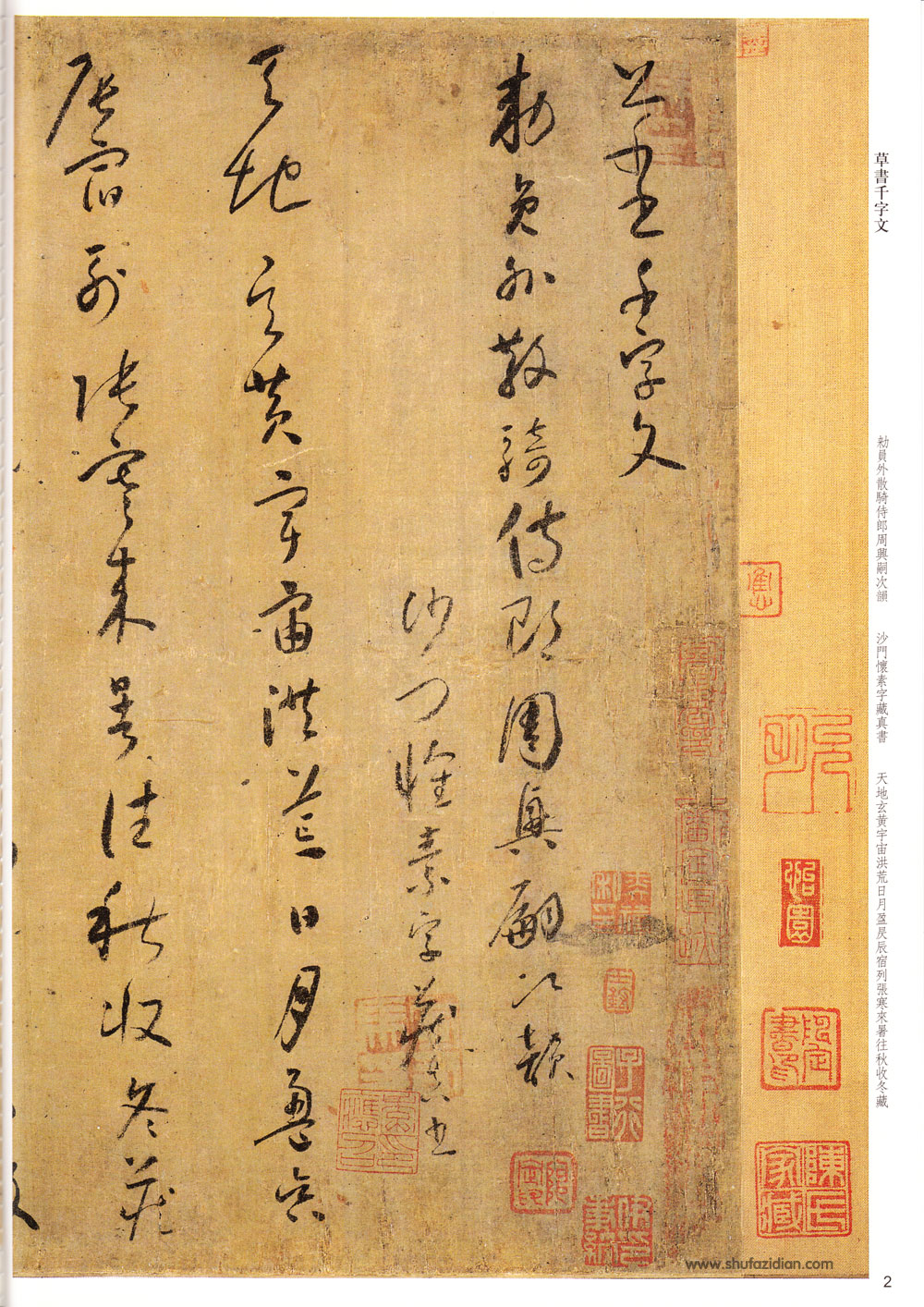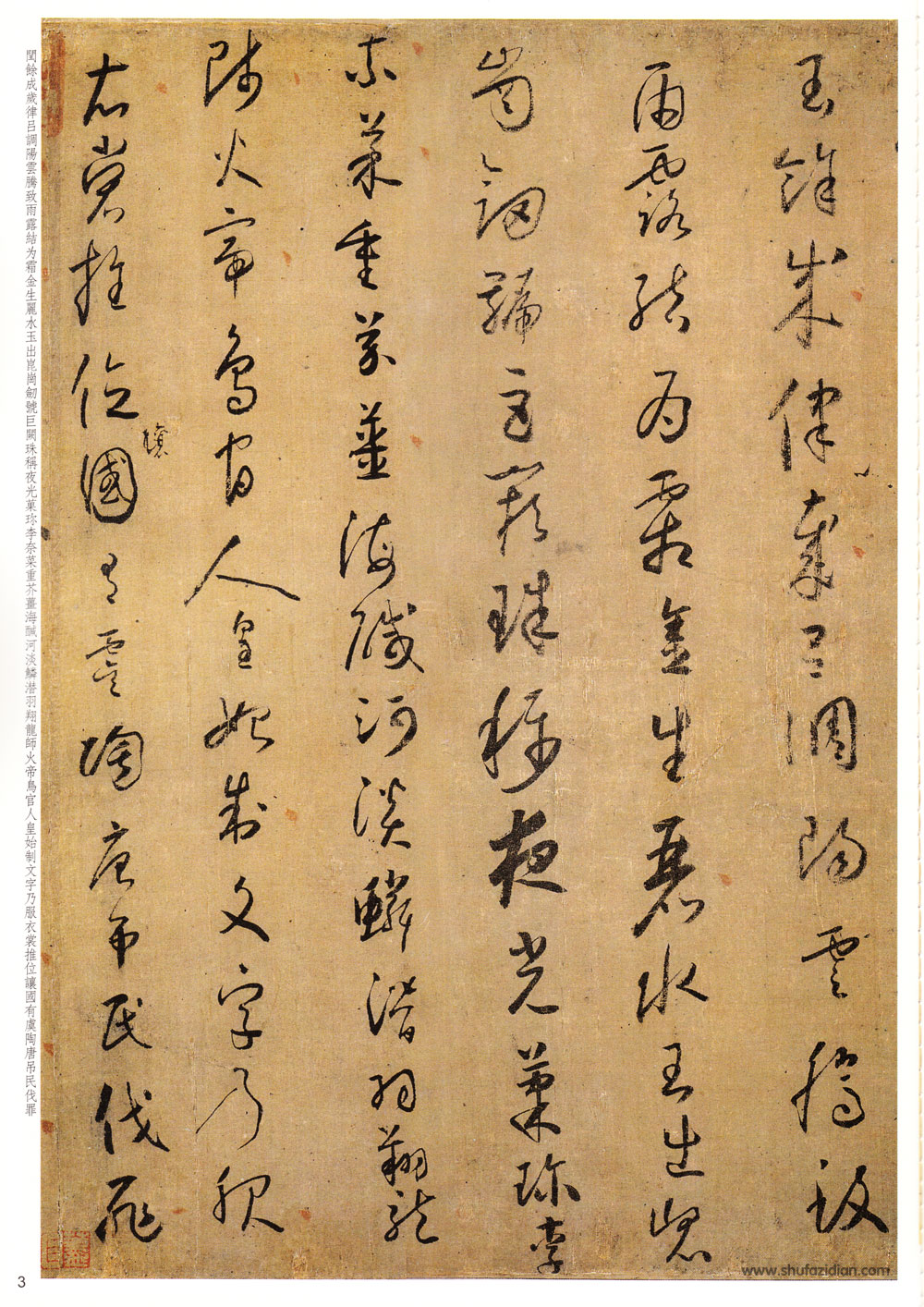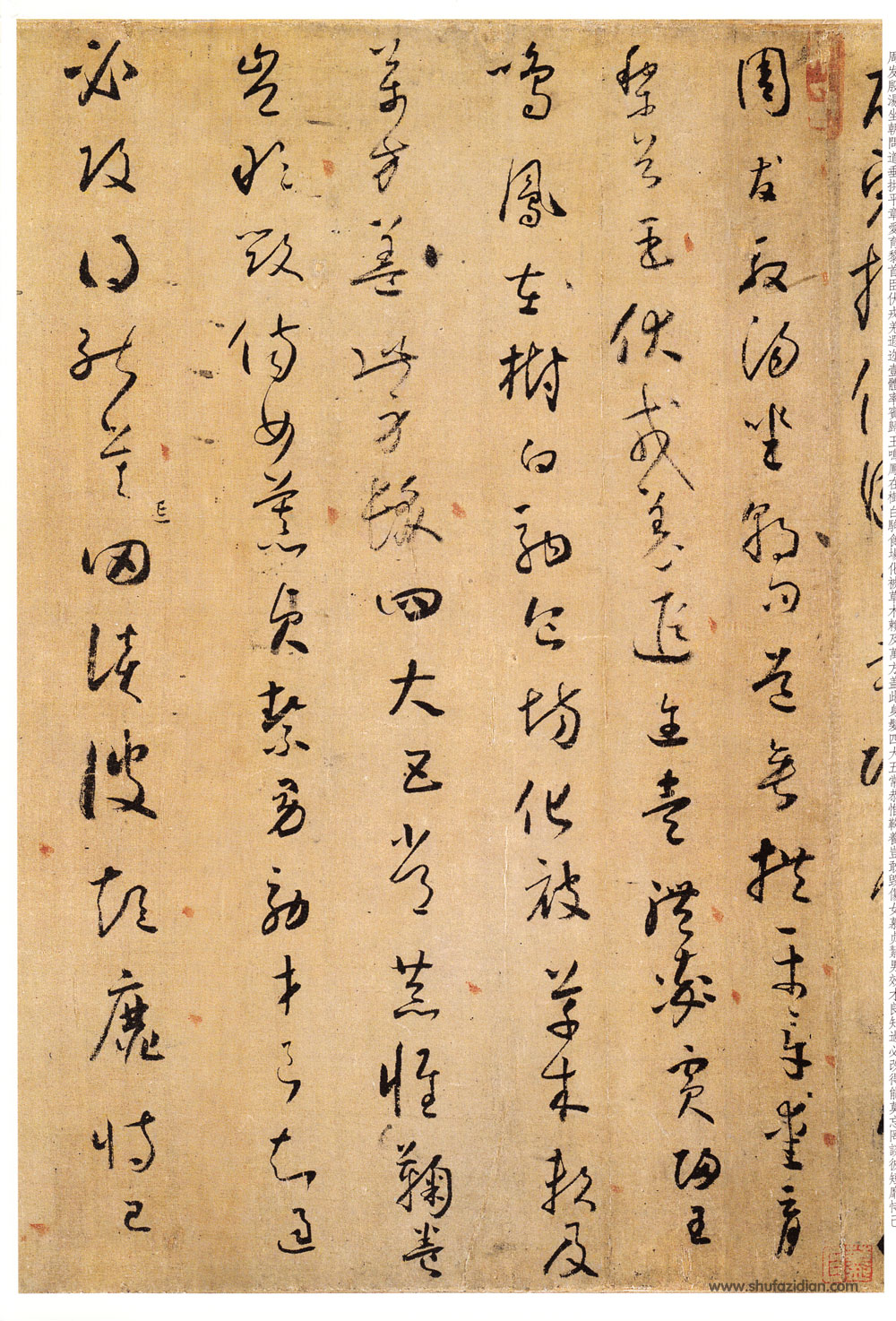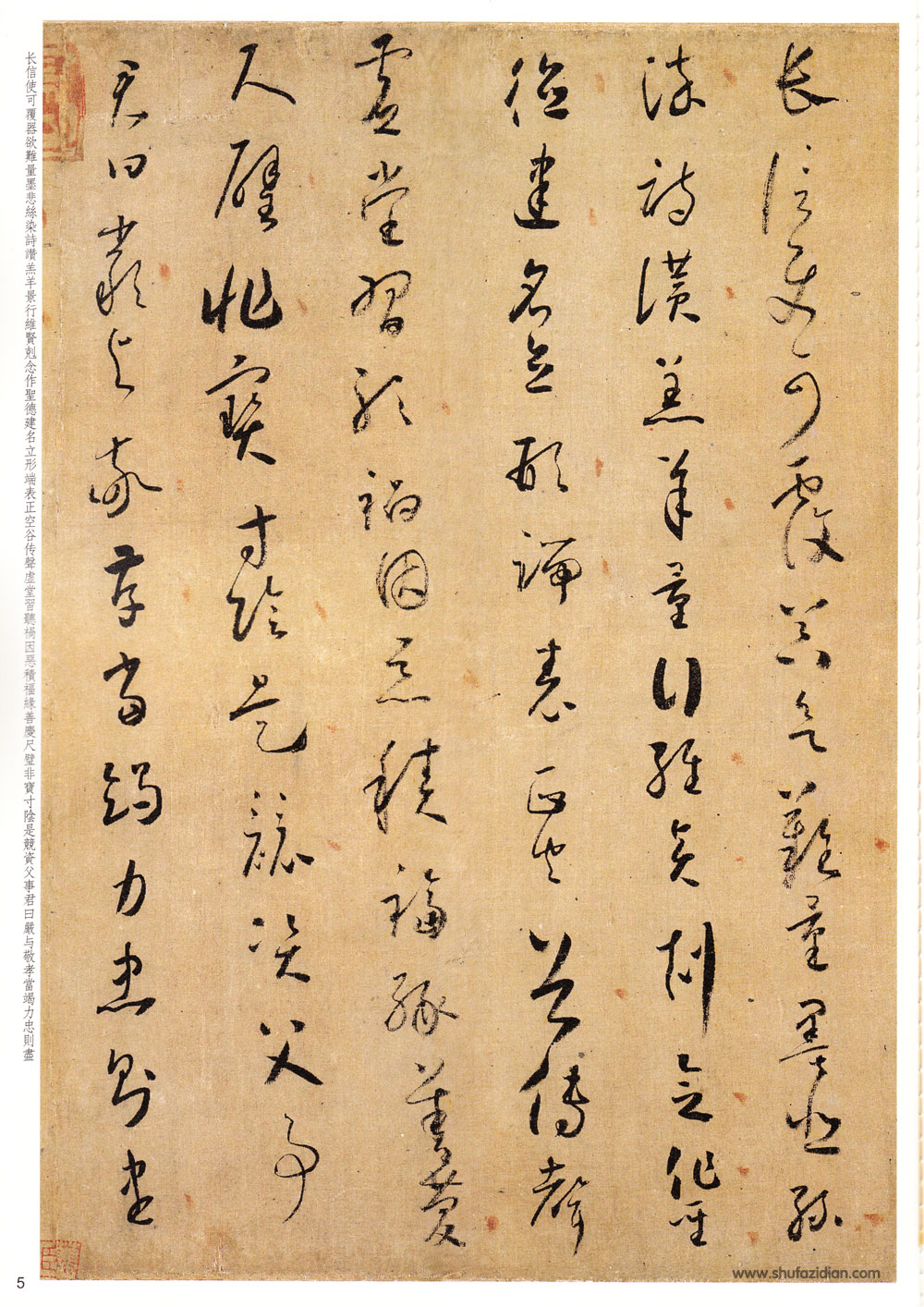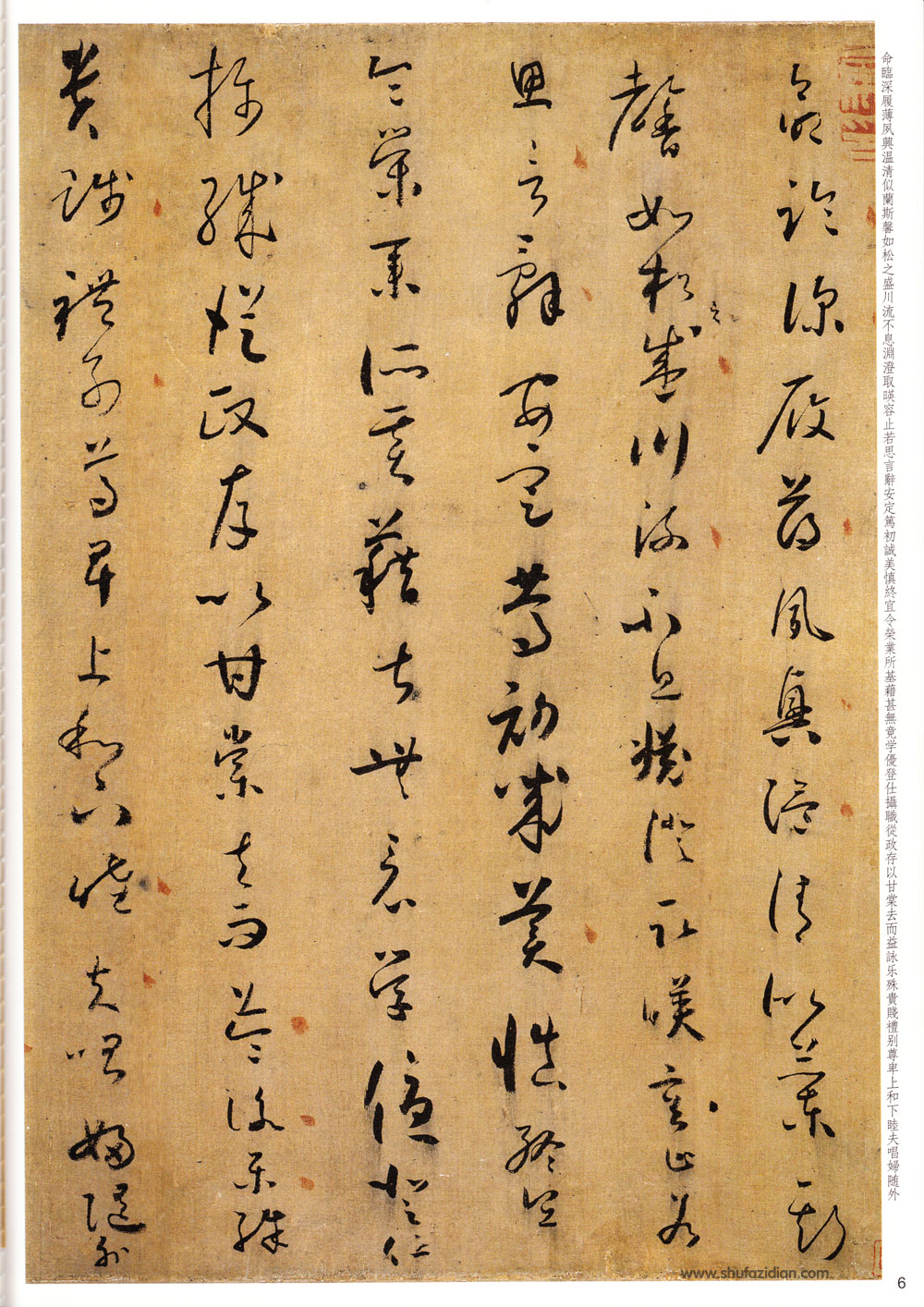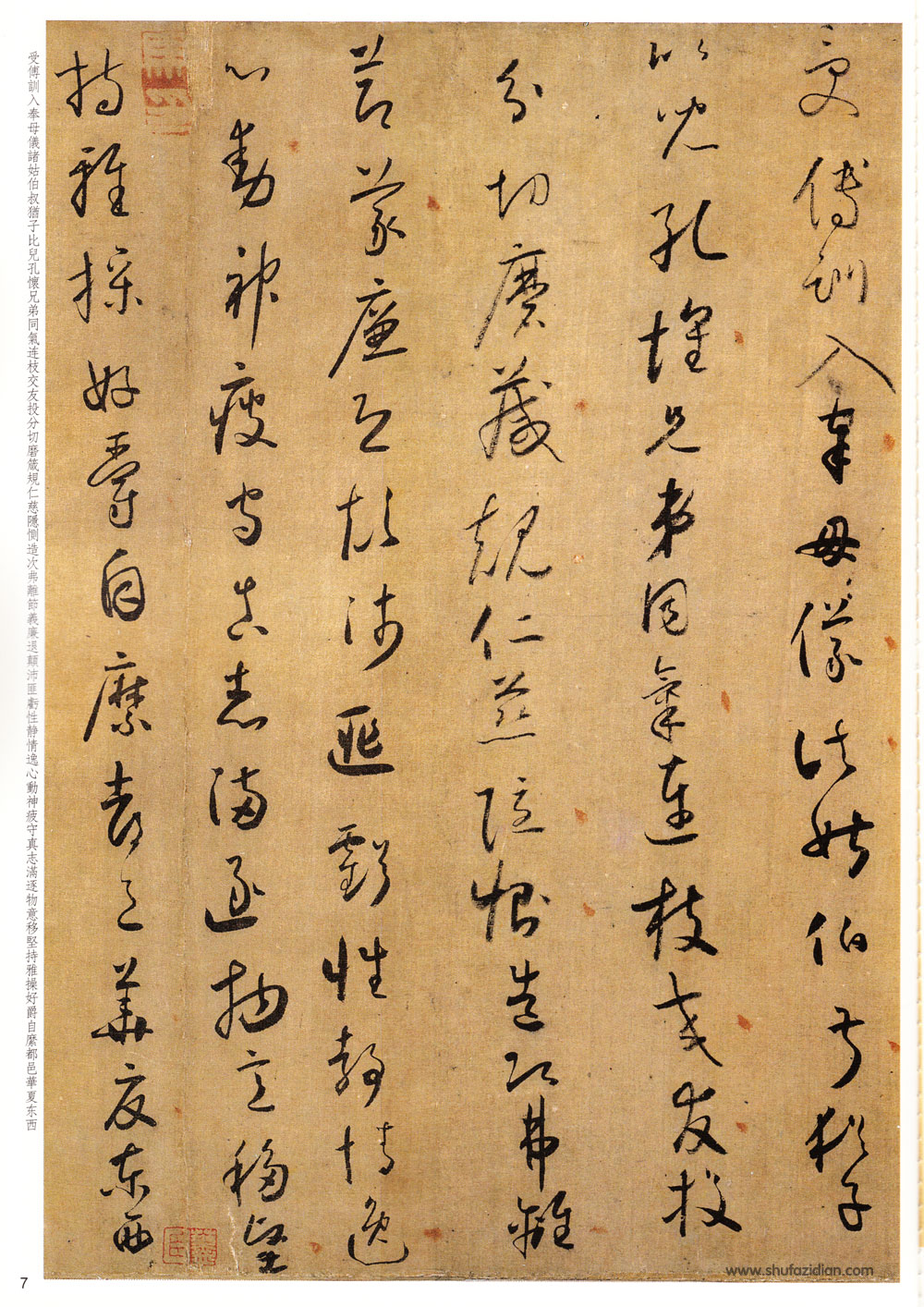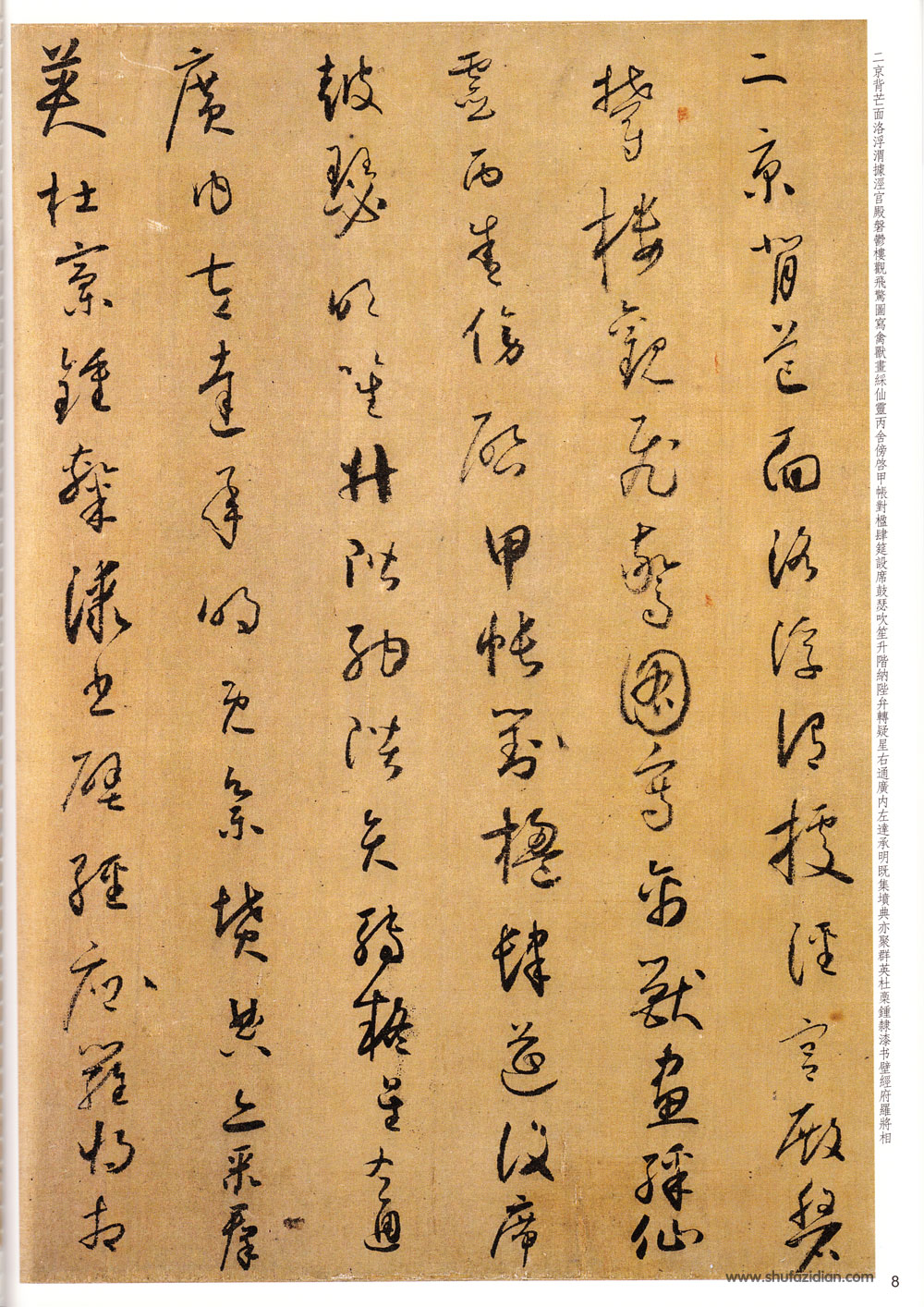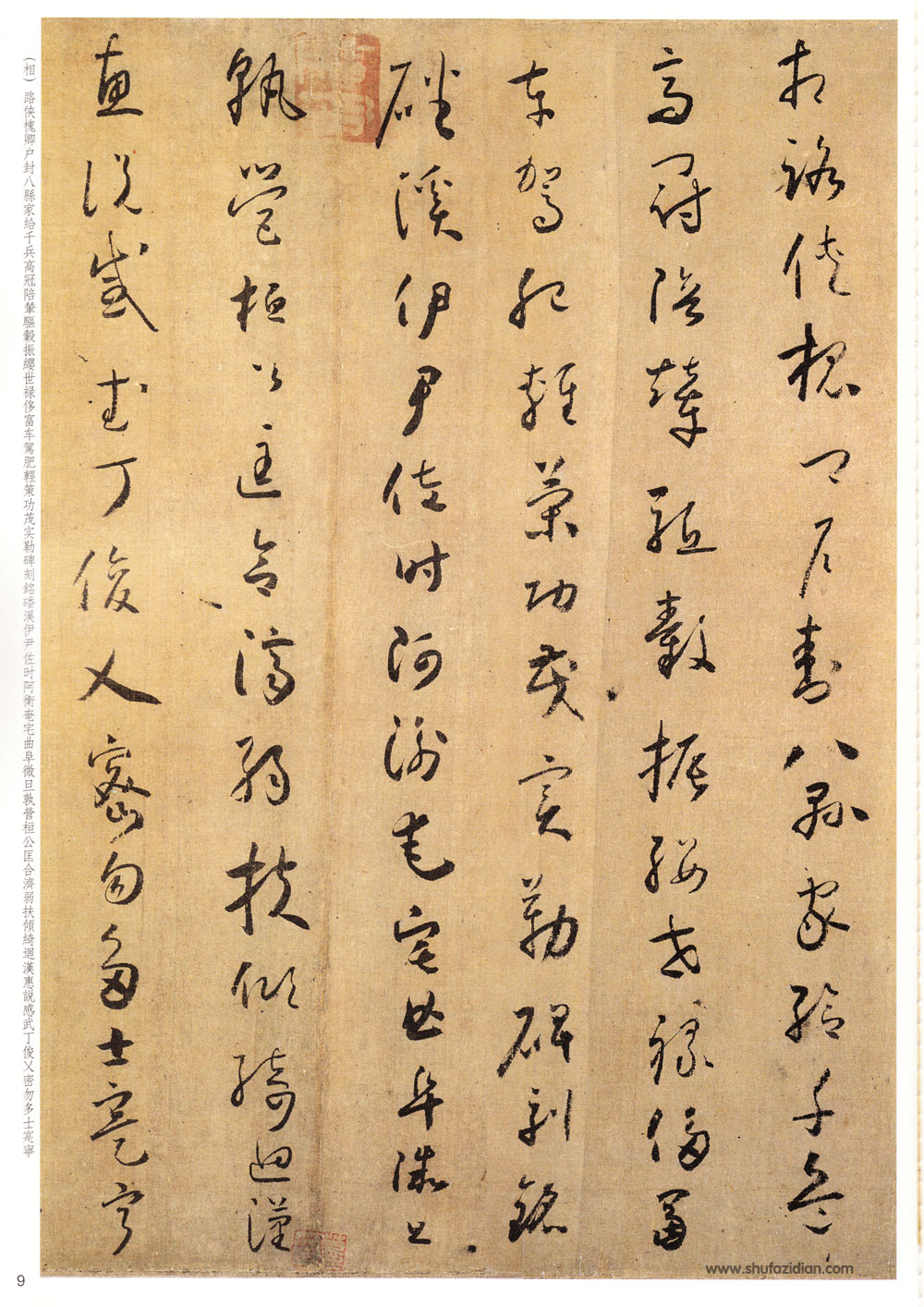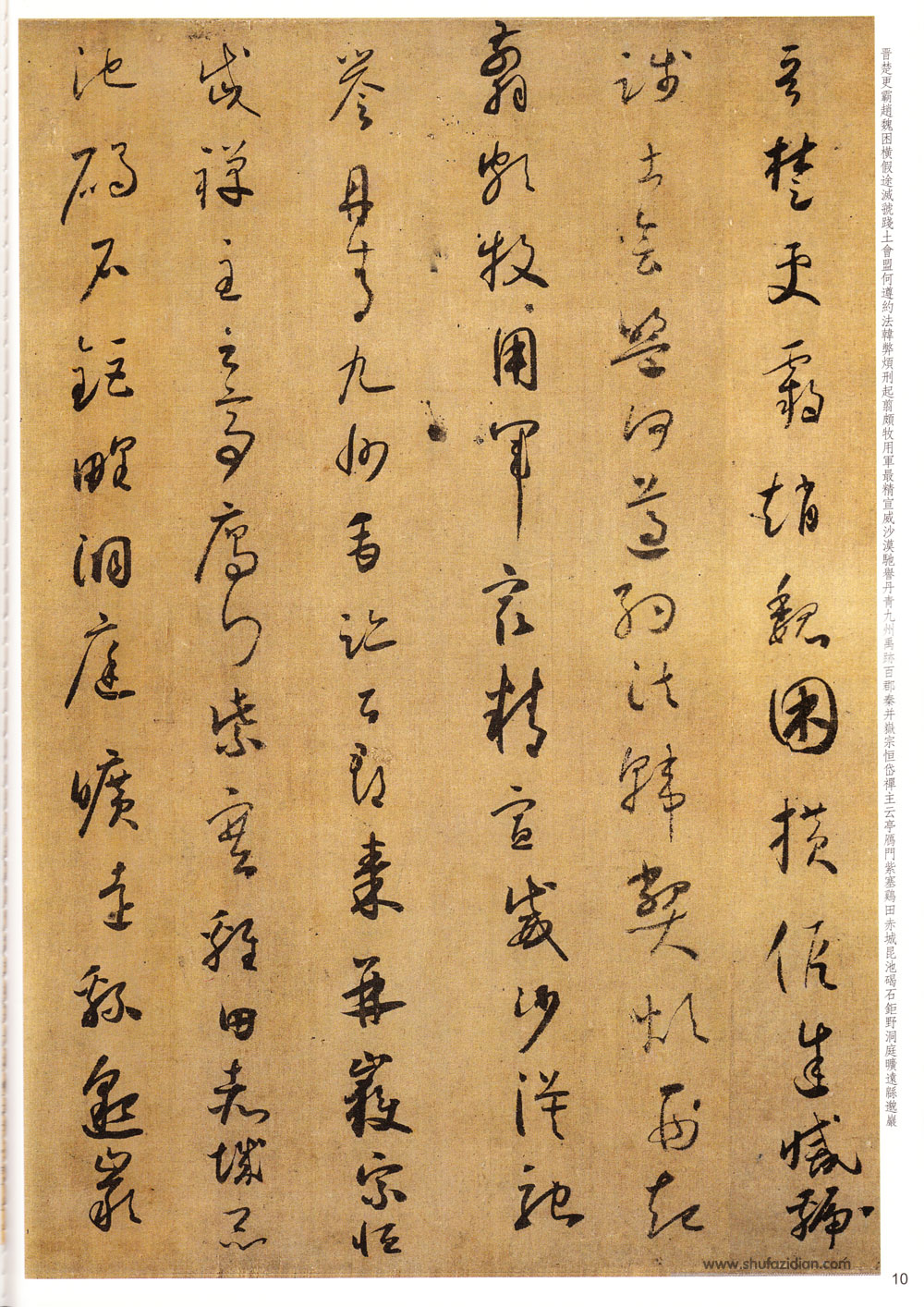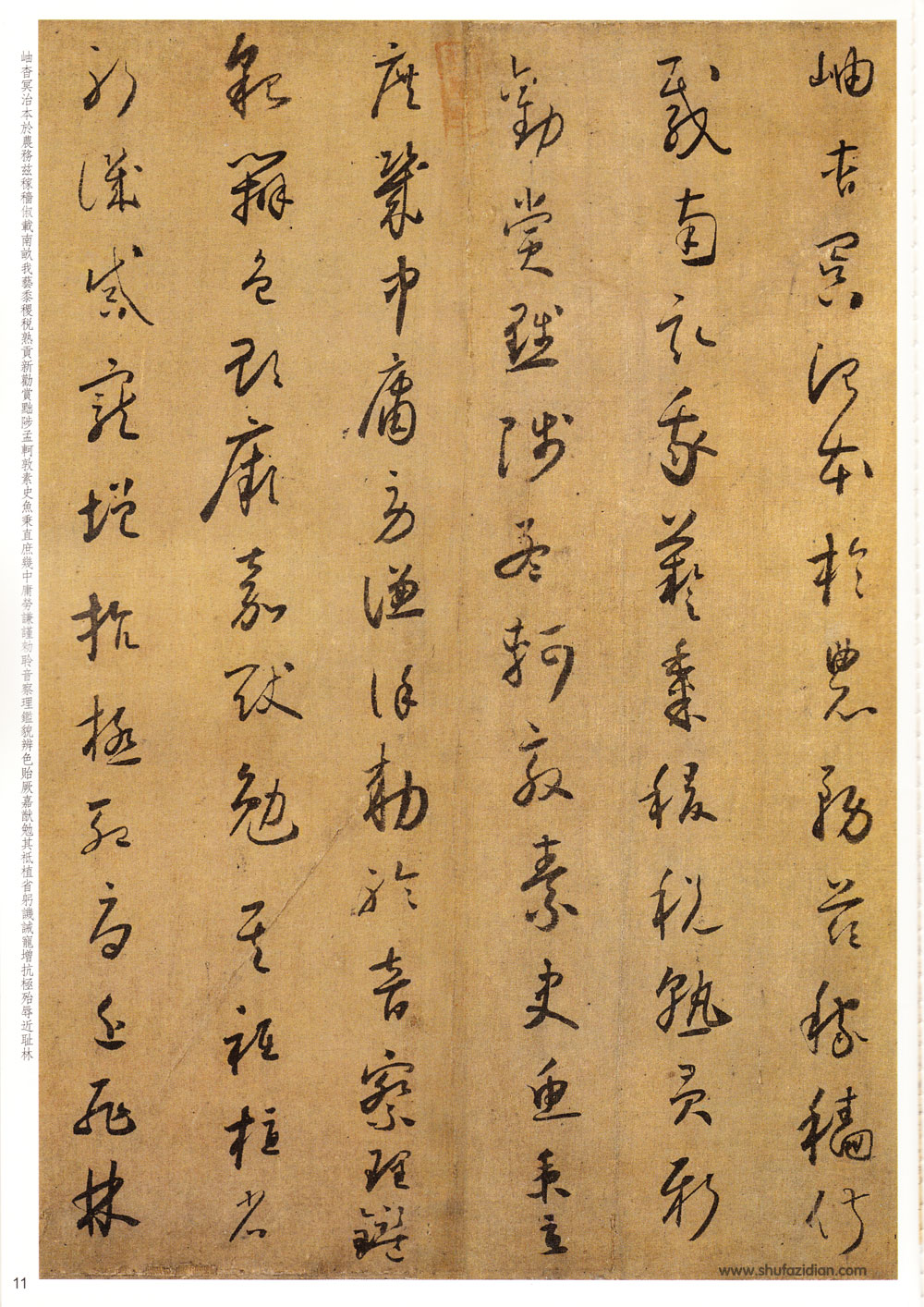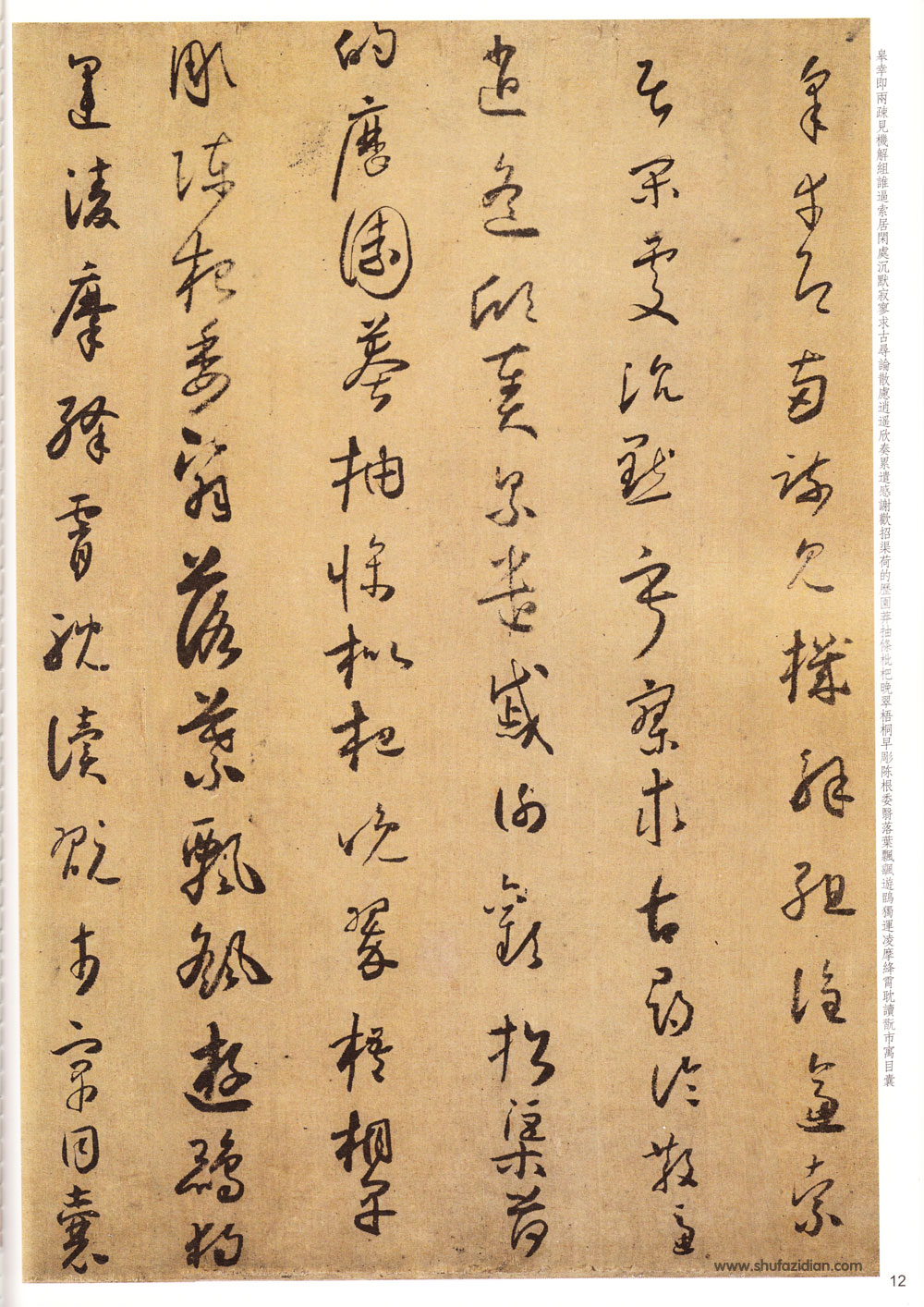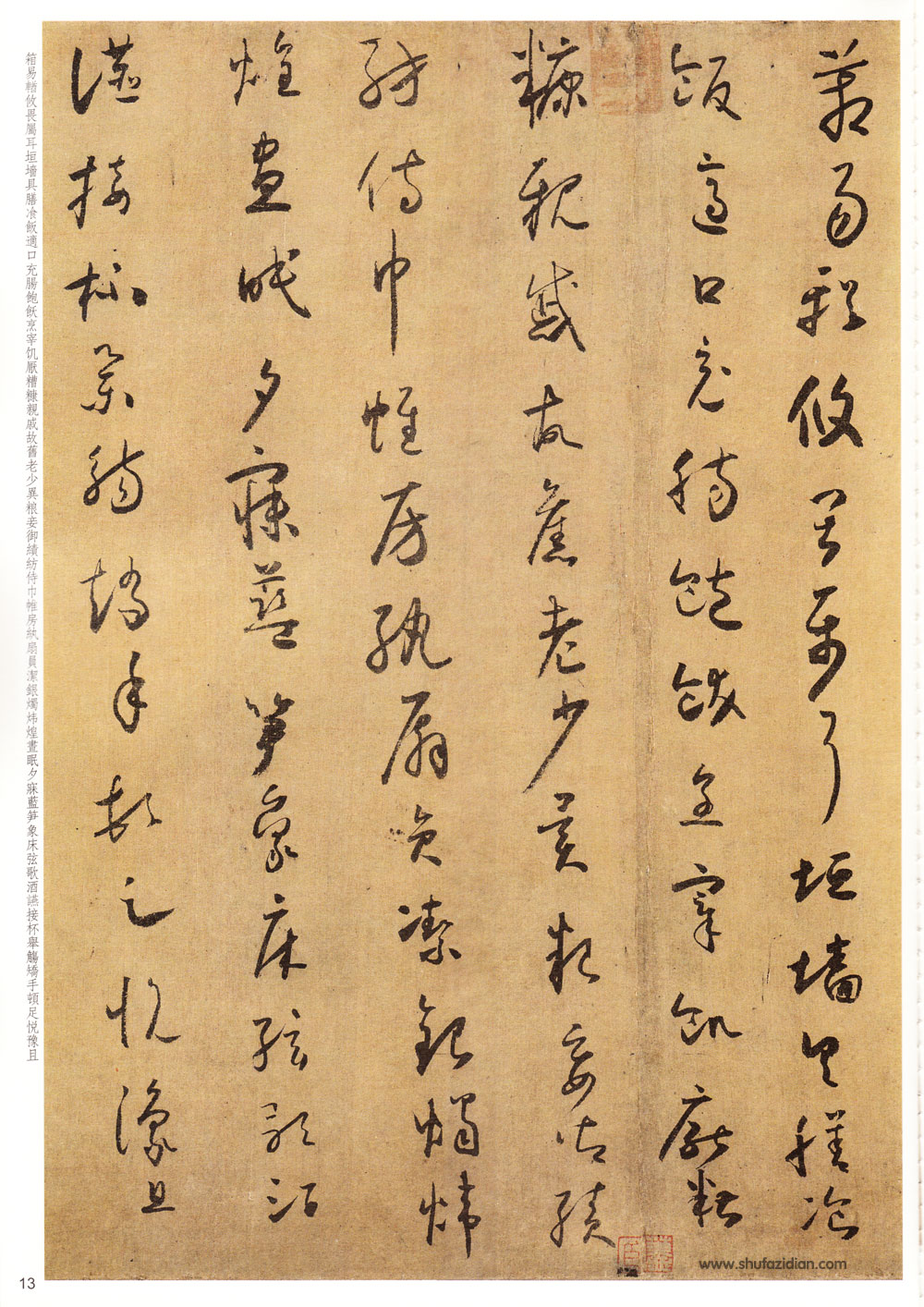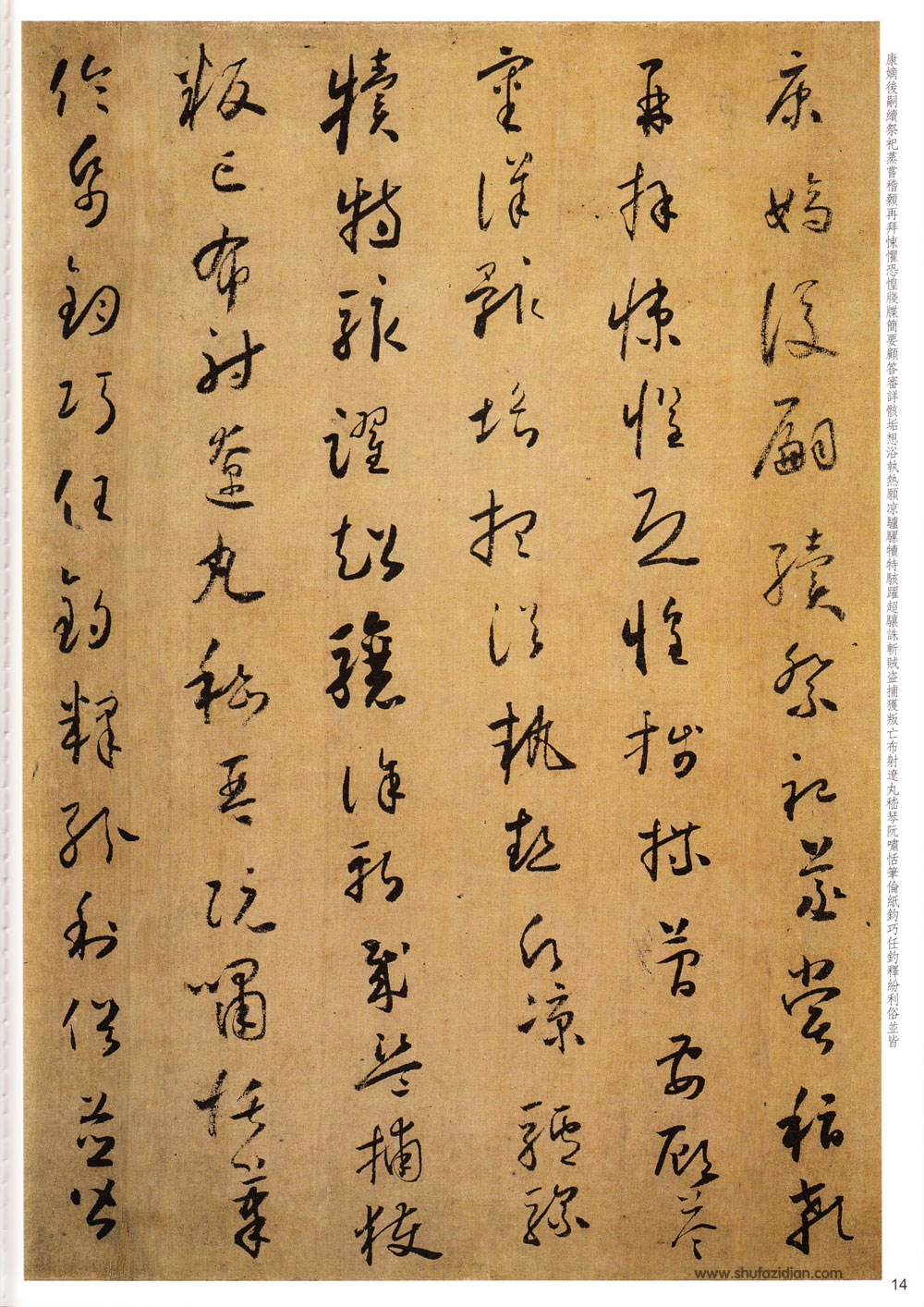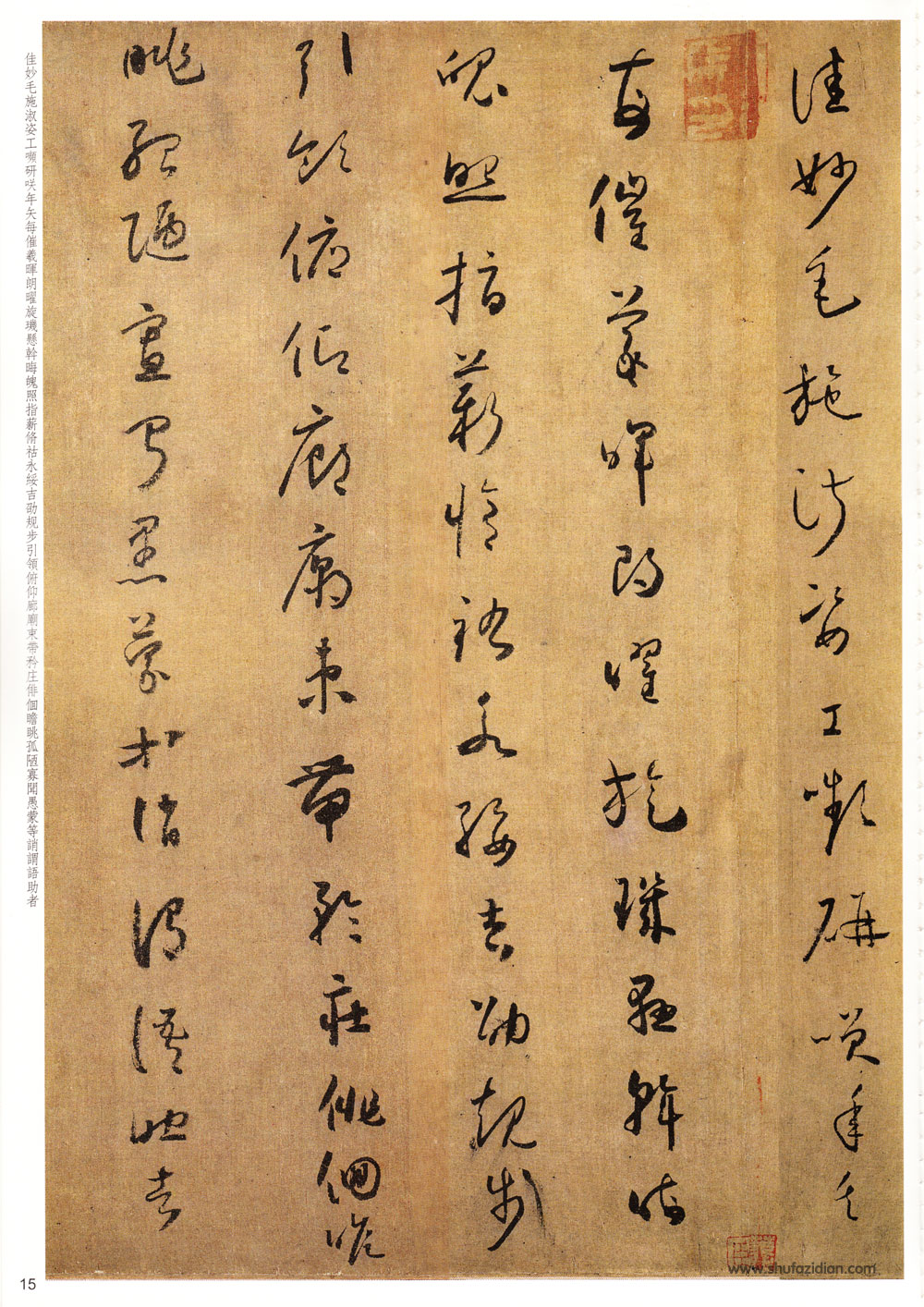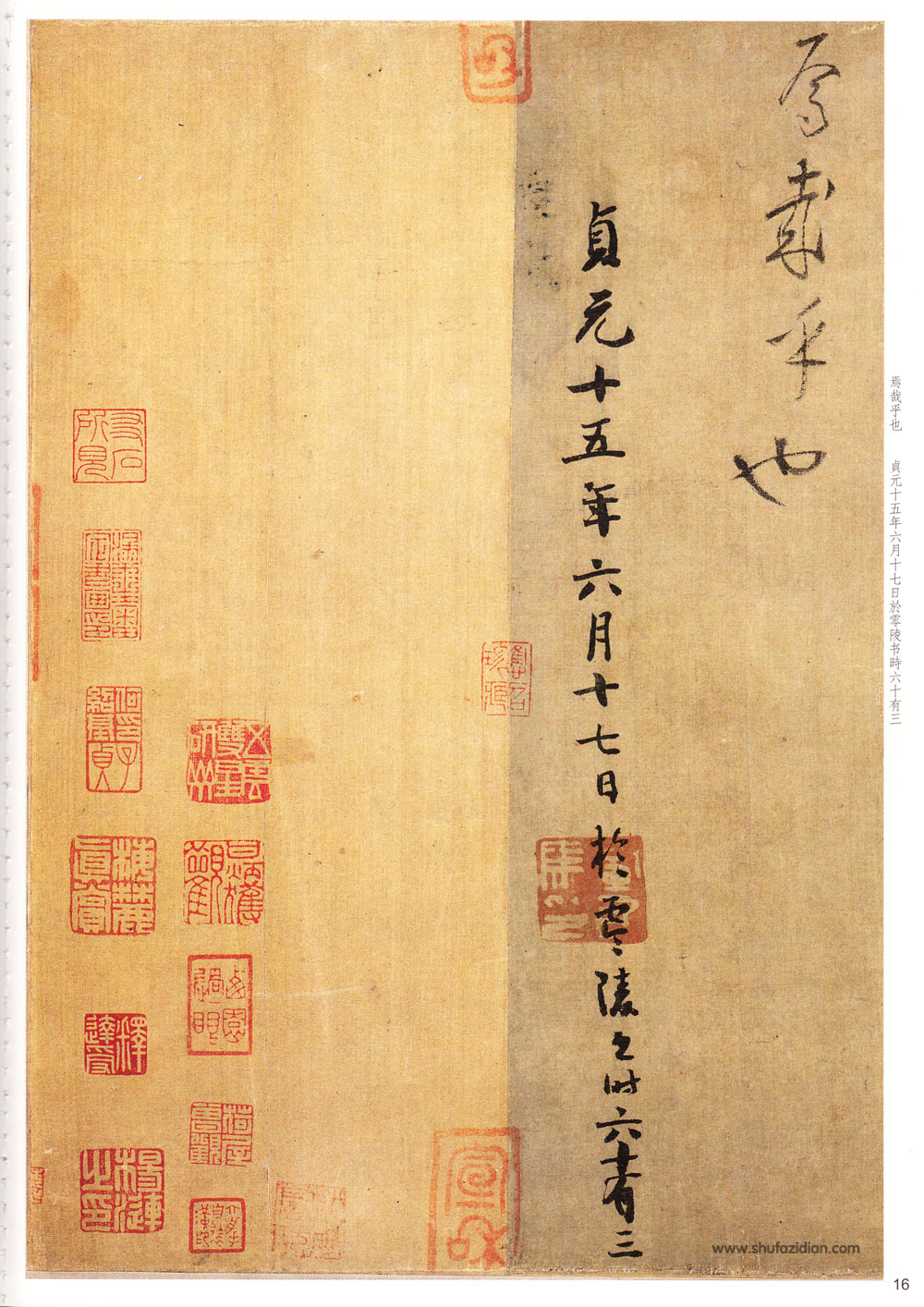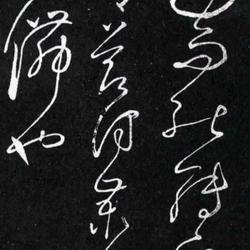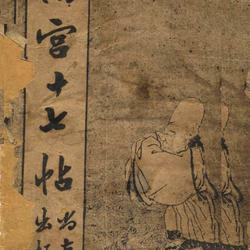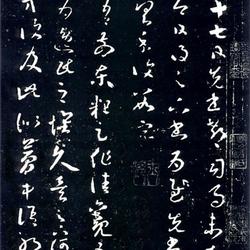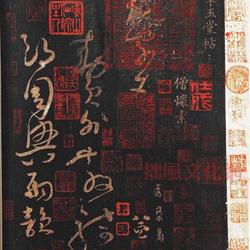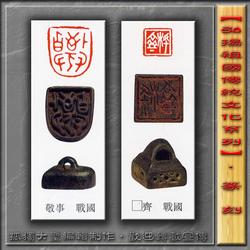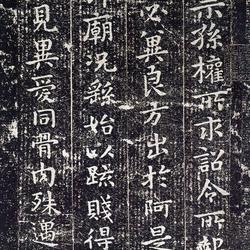Huaisu's Thousand-Character Cursive Script of Tang Dynasty
Huai Su (725-799), a monk from Changsha. His common surname was Qian, his courtesy name was Zangzhen, his name was Bi Zhong, and he was known as Monk Huaisu, Su Shi, Shi Huaisu and Samana Huaisu. As famous as Zhang Xu, Yan Zhenqing, Xu Hao, and Wu Tong (Huai Su's cousin). An outstanding calligrapher in the Tang Dynasty, he was good at Kuangcao and made great contributions to the transition of the history of Chinese calligraphy art from "Zhuancao, Zhangcao and Jin (Xing)cao" to Kuangcao. He became a monk at a young age and was a disciple of Master Xuanzang and Tripitaka. After sitting in meditation, he often wrote on paper, clothes, walls, and utensils. He even used plantains to practice calligraphy, and named his room "Yuan Tian'an". He also buried his unusable pens at the foot of the mountain, which was called the "Bi Zhong". He got drunk several times a day and wrote like crazy after being drunk. He once wrote an inscription on the "Drunk Monk Picture", which became a legend in the calligraphy circles and was known as "Drunk and Drunken Su". There are many kinds of Huaisu Qianzi calligraphy, but the "Xiaozi Zhenyuan version" is the best. It is praised as "one character is worth a thousand gold", so it is called "a thousand gold calligraphy". This book was written by Huaisu in his later years. The whole text does not have the indulgent whimsy of the autobiography. It is neither wild nor crazy, neither impatient nor impetuous. At first it seems careless, but in fact the writing is in line with the law, without the madness and anger, it is simple and elegant, the words are not connected to each other, and the writing style is more vigorous and simple. It reflects another pursuit of Huaisu's artistic creation. It should be regarded as a work that is extremely gorgeous but returns to dullness, so it has always been valued by scholars. Ming Mo Ruzhong said: "The authentic thousand-character inscription on Huaisu silk has abnormal pointillism and vertical and horizontal ideas. At first it seems careless, but the movements follow the pattern and fit the chemical industry. There is something indescribable about its wonderfulness."
Kuang Cao originated from Zhang Zhi of the Eastern Han Dynasty, founded by Zhang Xu in the Tang Dynasty, and became famous under Huai Su. Kuangcao is full of fluidity, and the sense of movement is based on different rhythms and melodies, which gives people a formal beauty of "a pen moves like a dragon and a snake", creating a vivid charm. Therefore, it can be said that Kuangcao has a dynamic beauty, while Zhen, Li and Zhuan have a quiet beauty, each with its own merits. There are many poems about calligraphy in the past dynasties, and there is no shortage of poems about Huaisu among them, because poets always appreciate Huaisu's alcoholism, eccentricity, and drunkenness, and they all exaggerate them in their poems. If you pay a little attention, you will find that all these renderings pave the way for his writing. Huaisu always writes "with a sudden rush of brushstrokes and a rush of ink, making the whole audience lose their voice and lose sight of them." This is the amazing thing about his wild cursive writing. . However, in front of his "Thousand-Character Essay on Xiaocao", we can't help but marvel at his diverse writing style, which is another spiritual world of Huaisu, neither wild nor crazy, neither impatient nor impetuous, but giving rise to a soft and elegant atmosphere. "Books are paintings from the heart". The calligrapher's spirit does not develop in one direction blindly. His interests and emotions also have a complex side. "Xiaocao Thousand Character Essay" can undoubtedly become a mirror for people to understand Huaisu, just like Kuangcao. . "The Thousand-Character Essay on Xiaocao" was written in the fifteenth year of Zhenyuan (AD 799) when Huaisu was sixty-three years old and had entered the twilight years of his life. Because Yao Gongshou of the Ming Dynasty rated this volume as "one word is worth a thousand gold", it is also called "a thousand gold post". Huaisu is famous for his wild grass, but this volume is calm and steady, expressing his mood in his later years. This work unfolds a picture of tranquility, tranquility, gentleness and beauty for us. It can be seen at a glance that his cursive writing style originated from Wang Xizhi's cursive writing, and was deeply influenced by other writers in the early Tang Dynasty. It has become more calm and gentle, mellow and euphemistic, contrary to Huai Su's calligraphy style of sudden rain and whirlwind. This post has something in common with Sun Guoting's "Shu Pu". Both are pure cursive techniques, but "Shu Pu" is more lively, deft and delicate. "The Thousand-Character Essay on Xiaocao" is Huaisu's patient work. The emotion that once he picked up the pen was like a wild horse running wild was suppressed. Sitting quietly writing the Thousand-Character Essay, the rushing wave turned into a gurgling trickle. This transformation Although it is spiritual, it unmistakably reveals Huai Su's solid basic skills, the delicate and thoughtful use of the pen, and strives to achieve a complete carving with each stroke, adding thickness and thickness to the delicacy, and eliminating the folds. And adding roundness is completely different from "Book Book". "The Thousand-Character Essay" was written by Emperor Wu of Liang Dynasty under the command of Zhou Xingsi. Huaisu deliberately used the text content to express his own emotions. Due to the large number of words, it cannot be done in an instant like "Bitter Bamboo Shoots Tie" and "Zangzhen Tie" with a small number of words. This requires the author to have the ability to combine both skill and emotion. In the process of writing, Huaisu's spirit The trajectory is also unbalanced. Some parts are neat and straight, some are messy, some are moderately arranged, and some are wide and narrow. From the formal point of view, it can be seen that it is within the rules, but from the taste point of view, it seems to be done accidentally. Appreciating the whole article, the beauty will vary from paragraph to paragraph. It is not difficult for us to feel that Huai Su's restless mood cannot be concealed despite his very patient writing.
In AD 799, Huaisu, who was in his sixties, wrote this thousand-character essay in his hometown Lingling. This work is made of silk, with a total of eighty-four lines and one thousand and forty-five characters. The last signature is "Sixty Years Three in Lingling on June 17, the fifteenth year of Zhenyuan", so it is called the Zhenyuan version with small characters. . Among his ink writings handed down from generation to generation, this work is extremely precious and has the reputation of being worth one piece of gold, so it is also called "Thousands of Gold Tie". This book is plain and elegant, with a sophisticated and childish tone. It is his masterpiece in his later years. This post was collected by Wen Zhengming in the Ming Dynasty, by Darshou, a monk in Liuzhou in the late Qing Dynasty, and by Xu Shaopu. There are inscriptions and postscripts by Wen Jia, Song Cui, Bi Qiufan, Liuzhou, etc. in front of the post, and postscripts by Wen Zhengming, Wen Jia, Wang Wenzhi, He Shaoji, Ruan Yuan and other famous writers behind the post. This volume of ink, measuring 28.6 cm in length and 278.6 cm in width, was collected by the Lin Family Lan Qianshan Museum in Taiwan and is now stored in the National Palace Museum in Taipei.
